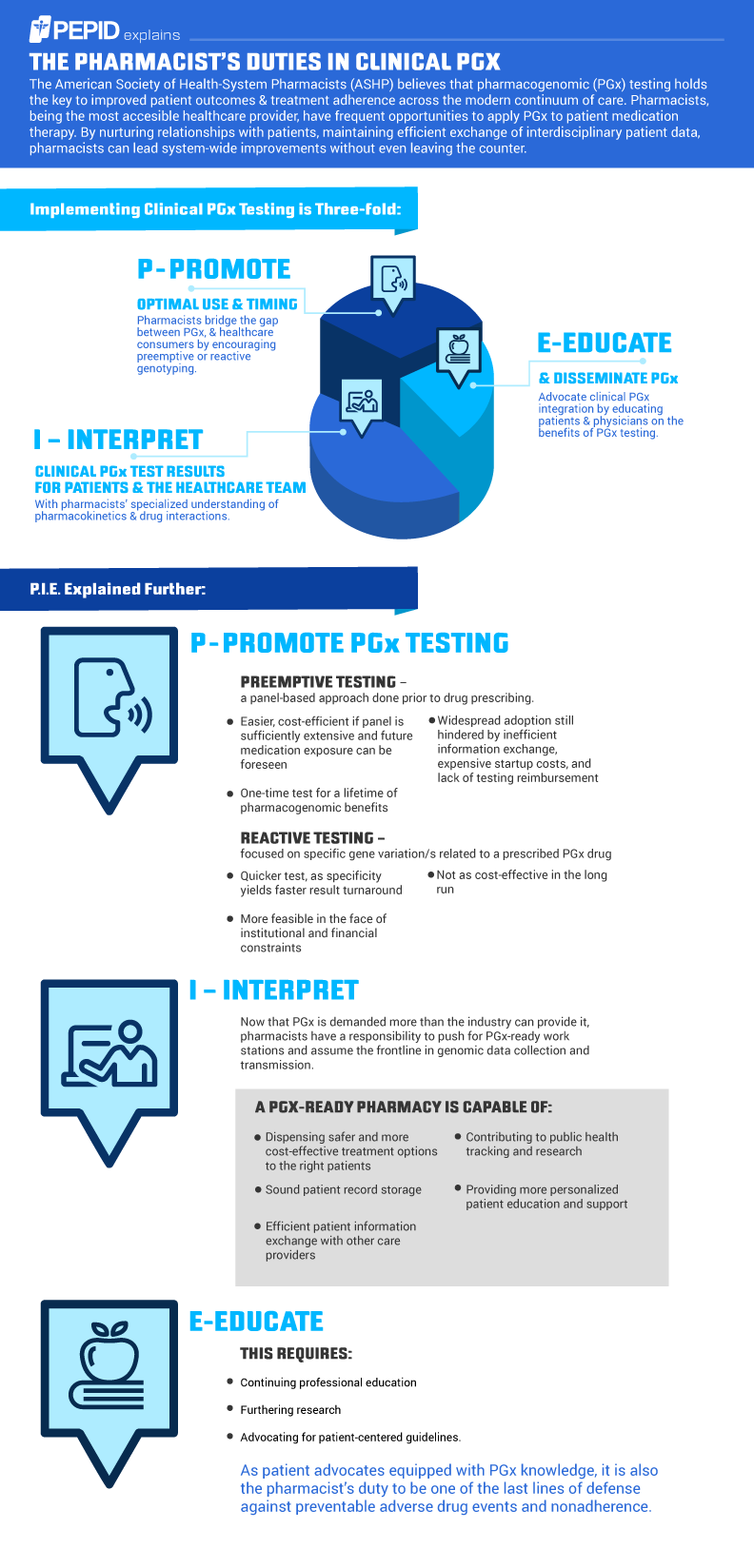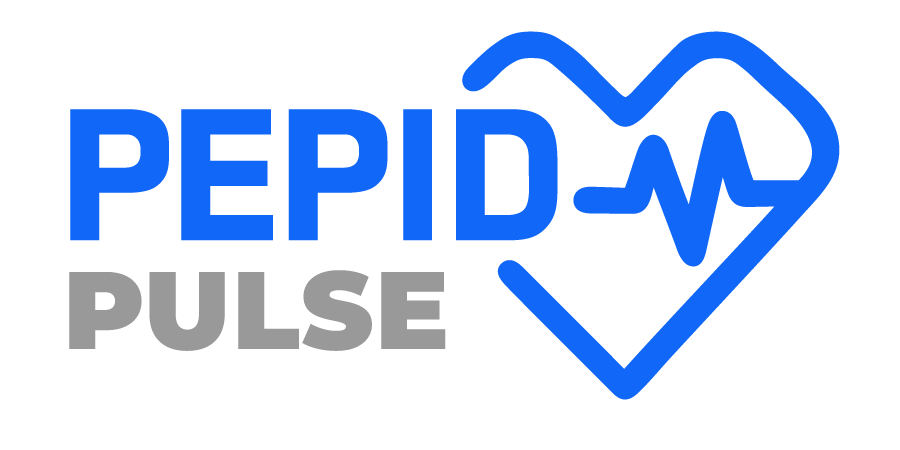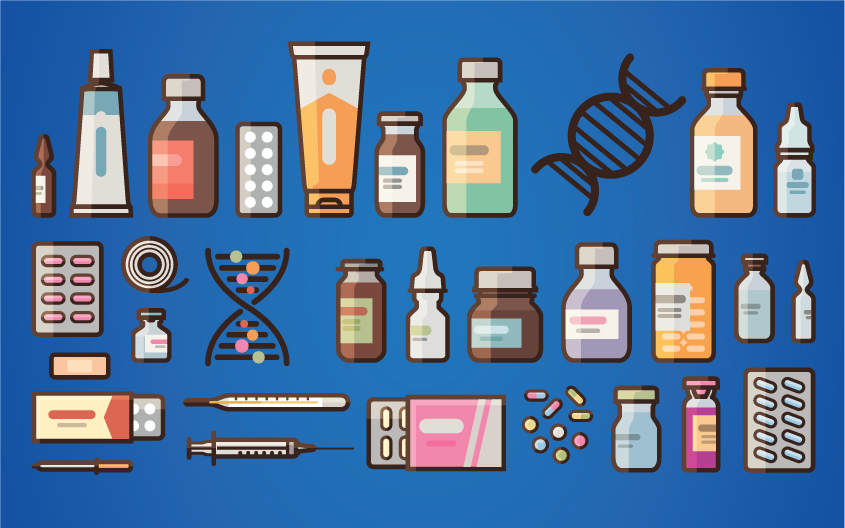Getting a Bigger Slice of the P.I.E.: The Pharmacist’s Duties in Clinical Pharmacogenomics (PGx)
Ninety percent of Americans live within 5 miles of a community pharmacy, with local patients averaging 35 drugstore visits annually. Compared to the average frequency of 4 primary care physician visits, and 9 outpatient specialist visits a year, today’s pharmacists find themselves at the very tip of the spear in improving drug therapy outcomes, adherence and delivering true patient-centered care. The question is, why are physicians, policy-makers, and patients keeping pharmacists in the sidelines of primary care, when they are the most frequent point of contact the system has with patients? With the onset of implementing precision medicine, what will the pharmacist’s duties in clinical pharmacogenomics be?
This October, PEPID joins celebrating American Pharmacists Month, themed: “Easy to Reach and Ready to Help”, which aims to recognize the broad spectrum contributions our friendly neighborhood pharmacists make to treatment efficacy and safety, and to making every drug regimen – yes, herbal supplements and probiotics included – as effective, safe, and sustainable as possible.1
Over the Counter Impact
As pharmacogenomics sets new standards in precision medicine, allowing physicians to focus on “Getting the Right Drug to Each Patient”, pharmacists are in a unique position to catch and report nonadherence at the root where it matters most. By picking up where doctors have left off and using their specialized knowledge, the pharmacist’s counter is where the real fine tuning behind the most effective and cost-friendly regimen takes place, and where the objective becomes “Getting the Drug Therapy Right for Each Patient”. The crux of the matter is, patients and other stakeholders still see pharmacists mostly as pill dispensers, and pharmacists seem to be reluctant to step into the spotlight as true community health front-liners.5
PEPID’s review of the American Society of Health-System Pharmacists’ (ASHP’s) “Statement on the Pharmacist’s Role in Clinical Pharmacogenomics” reveals 3 key responsibilities in the propagation of PGx as an industry solution and driver of treatment adherence.2,3,4,6

Support your neighborhood pharmacist
To learn more about this year’s American Pharmacists Month (APhM) and what you can do to give back and join in on the conversation, visit www.pharmacistsmonth.com/. Here, you’ll find a wealth of downloadable media that you can use to help promote APhM while educating yourself about the often overlooked services your pharmacist can offer.
Keep up with both local and global conversations by following these hashtags on Facebook, Twitter and Instagram: #APhM2018 and #ThankAPharmacist
Resources:
- “Easy to Reach, Ready to Help.” American Pharmacists Month, American Pharmacists Association, com/pharmacists-can-help/.
- “Gaps in Implementation of Clinical Pharmacogenomics.” Euformatics, 4 May 2017, com/gaps-in-implementation-of-clinical-pharmacogenomics/.
- Am J Health Syst Pharm. 2015 Apr 1;72(7):579-81. doi: 10.2146/sp150003.
- Arwood, MJ, et al. “Implementing Pharmacogenomics at Your Institution: Establishment and Overcoming Implementation Challenges.” US National Library of Medicine, Clinical and Translational Science, Oct. 2016, https://www.ncbi.nlm.nih.gov/pmc/articles/PMC5121089/.
- Kehrer, James P., et al. “Pharmacy’s Role in a Modern Health Continuum.” US National Library of Medicine, Canadian Pharmacists Journal, Nov. 2013, https://www.ncbi.nlm.nih.gov/pmc/articles/PMC3819958/.
Samwald, Matthias, et al. “Incidence of Exposure of Patients in the United States to Multiple Drugs for Which Pharmacogenomic Guidelines Are Available.” PLOS ONE, Public Library of Science, journals.plos.org/plosone/article?id=10.1371/journal.pone.0164972


Trackbacks/Pingbacks